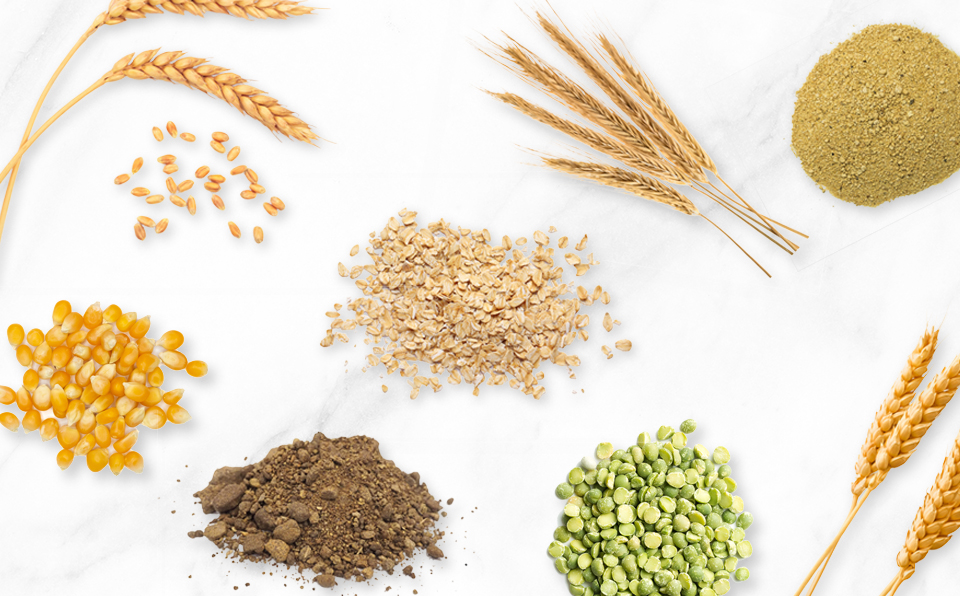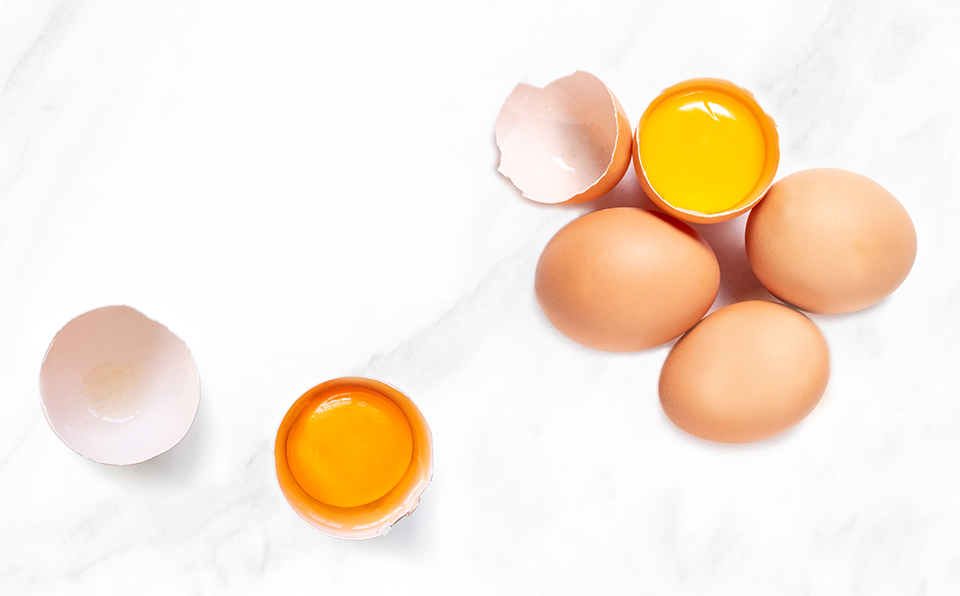
What do egg farmers feed their hens?
By Egg Farmers of CanadaAre you curious to learn what farmers feed their hens to keep them healthy and productive? Egg farmers work closely with nutrition specialists to ensure hens receive a balanced diet and they follow feed regulations set by the Canadian Food Inspection Agency. The feed used for hens in Canada is safe and nutritious, containing grains, protein, fats, vitamins and minerals. In addition to being vital for maintaining the hens’ health, a balanced diet also plays an important role in the quality of eggs produced.
We spoke with Dr. Doug Korver, Poultry nutrition consultant at Alpine Poultry Nutrition, Inc. and Professor Emeritus of Poultry Nutrition at the University of Alberta who has dedicated his career to studying poultry nutrition. Read on to have all your hen feed questions answered!
Can you tell us about your work and research?
“I’ve been studying poultry nutrition for almost 28 years, focusing on how to keep hens healthy while they lay eggs,” says Dr. Korver. “My work explores how to prepare pullets—young hens—for laying and maintain bone quality throughout their production cycle.”
What do hens need in their diet?
“Generally, we would categorize three groups of ingredients,” says Dr. Korver. “We have energy ingredients, along with protein ingredients. The third category includes vitamin and mineral supplements.”
Energy sources include grains like wheat, corn, barley, rye and oats, which provide the calories hens need for egg production. Proteins like soybean or canola meal and legumes like peas help hens build muscle and produce eggs. Because hens require high-quality protein, feed used in Canada can contain a small amount of animal by-products. This means some feed rations may contain meat and bone meal, feather meal, blood meal, animal fat and dried eggshells.
It’s important for feed to contain the vitamins, minerals and sodium hens need to support bone health, egg production and overall well-being. One example is calcium—because hens are laying an egg every day, they need a diet rich in calcium to support bone health and produce eggs with strong shells. Feed never contains any added hormones or steroids as these are not approved for use in Canada.

Are there regional differences in hen feed across Canada?
“Yes,” says Dr. Korver. “Whether we’re talking about Western Canada or Eastern Canada, we see differences in how producers use what’s available locally. In Eastern Canada, hens are mostly fed corn and soybeans. In Western Canada, wheat, canola meal and peas are more common.”
Does a hen’s diet affect the colour of her egg yolks?
“Diet influences egg yolk colour,” explains Dr. Korver. For example, “in Eastern Canada, where corn is common, yolks are a deeper yellow because corn contains natural pigments. In Western Canada, where wheat is used, yolks tend to be lighter.”

How does feed differ for specialty eggs like omega-3, vitamin D, or organic?
“An egg is a complete nutritional package with essential fats, amino acids, vitamins and minerals,” says Dr. Korver. “Since hens pass nutrients into their eggs, we can enhance their diet to produce specialty eggs that meet consumer preferences while keeping hens healthy.”
Farmers adjust hen diets to create specialty eggs. Omega-3 eggs come from hens fed a diet rich in omega-3 from sources like flaxseed, fish oil or algae. Vitamin D-enriched eggs result from diets with added vitamin D. Organic eggs come from hens eating certified organic feed, while vegetarian-fed eggs come from hens on grain and legume-based diets without animal by-products.
“By increasing key nutrients in a hen’s diet, we can directly enhance the egg’s nutritional value,” explains Dr. Korver. “These feeding strategies provide consumers with more options while keeping hens well-nourished.”
Do feed ingredients like gluten or soy pass into the eggs?
“No,” reassures Dr. Korver. “Hens break down proteins like gluten or soy into amino acids before they’re absorbed. These don’t transfer into the eggs.”
Who regulates what goes into hens’ diets?
Farmers follow feed regulations set by the Canadian Food Inspection Agency, which evolve as new ingredients become available for use. “As new products and new supplements are developed, there’s a fairly onerous regulatory process,” says Dr. Korver. “This is to ensure that, first of all, those new products are effective at what they say they’re going to do, and second of all, that they’re safe.”
What excites you about the future of hen nutrition?
“There’s so much potential,” says Dr. Korver. “For example, fava beans could replace soybean meal in Western Canada. They’re grown locally, which reduces costs and carbon footprints.”
“We’re also learning more about how to keep hens healthy for longer production cycles. This means fewer hens are needed to meet demand, which is better for farmers, the environment and the hens themselves.”
Want to learn more about hen feed? Watch this video by Manitoba Egg Farmers for a closer look at how farmers and poultry nutritionists work together to ensure hens get balanced, nutritious diets.